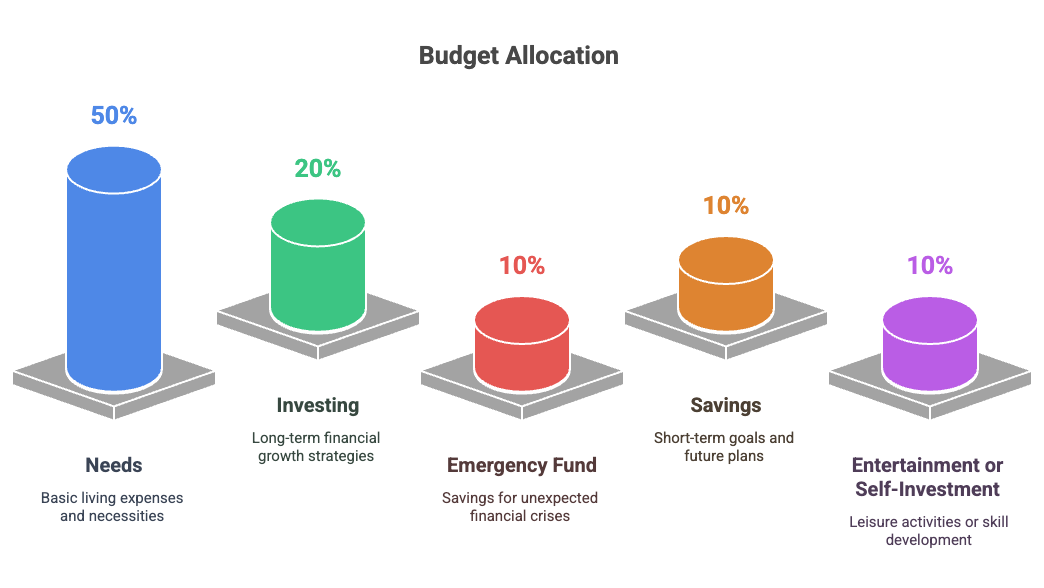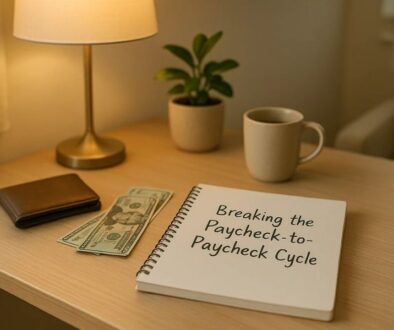Saving Money from a Low Salary: What Genuinely Works
I’m not here to urge you to stop buying necessities or to stop enjoying life. That is not what saving is about.Saving involves setting away money now to prepare for whatever life throws at you, whether it is good or bad. It could be an emergency, an unexpected opportunity, or simply peace of mind knowing you’re not living on the edge.Sure, there’s a lot of talk about “don’t save, invest!” — and while investment is vital, even the wealthiest people maintain huge cash reserves. Why? Saving provides you with power, independence, and flexibility. In this blog article, I’ll go over the precise tactics that worked for me, from making a simple budget to participating in a 21-day challenge that radically altered my spending patterns. These are real-life, practical ideas, not financial theory, and if they worked for me, they may work for you as well.
The Psychology of Spending: How Your Brain Tricks You
Our brains have been wired to buy things, and each time we do, we get a small dose of dopamine. That’s why purchasing anything new feels thrilling, even if we don’t actually need it. It’s not always about the product; it’s about the sensation it offers us. We end up spending a lot of money on things we don’t really need. Take myself for example: a few months ago, I purchased a trimmer from Amazon since it was “on offer.” Sounds like a good deal, doesn’t it? It’s been six months, and I think I’ve used it three times. It wasn’t a necessity; it was simply a reaction to a deal and an act of impulse.Buying costly tea or coffee and sharing it on Snapchat or Instagram has been popular nowadays. It’s less about the drink and more about the image—the lifestyle we’re attempting to represent. We spend to impress, fit in, and flex, not because we actually desire or need such things.
Whether it’s devices, clothes, or pricey beverages, we frequently buy to demonstrate status rather than happiness. And this type of spending gradually depletes our funds without our knowledge.
Budgeting Is the Cure: How to Take Control of Your Money
Kevin O’Leary, an investor and wealthy businessman, says that most people waste 15% to 20% of their income on things they don’t need, like daily takeout, overpriced coffee, or subscriptions they don’t need.Spending isn’t the problem; spending without a plan is. You don’t have to stop having fun in order to solve this. All you need is a straightforward, purposeful budget and the self-control to stick to it.
The 50/20/10/10/10 Rule
A Simple Budget That Works
Let’s say you earn $3,000/month. Here’s a smart way to break that down:
|
Category |
% |
Amount ($) |
|
Needs (Rent, Bills, Groceries) |
50% |
$1,500 |
|
Investing (401k, Roth IRA, etc.) |
20% |
$600 |
|
Emergency Fund |
10% |
$300 |
|
Savings (Short-Term) |
10% |
$300 |
|
Entertainment / Self-Development |
10% |
$300 |
$1,200 saved/invested monthly = 40% of your income protected for the future.
The Bottom Line
Your combined savings + emergency fund should always equal or exceed 20% — no compromises.
Sold My Dogecoin for Gas Money — Then I Started Saving for Real
It all started when I had to go from California to Las Vegas to meet my girl friend, and I didn’t have enough money for gas. That was the breaking moment. In despair, I sold my Dogecoin holdings. Ironically, the identical investment increased to 25x not long after. I lost the coin, and then the girl. With no money in my account, no backup plan, and a pile of regret, I knew something needed to happen. That’s when I decided to start small and develop one stable habit. I committed to a 21-day savings challenge, which radically changed my mindset.
How I turned things around—21 days at a time
- Cut the Useless Subscriptions
- I went through every subscription and asked, Do I really use this? If not, I canceled it — from food delivery passes to random streaming apps.
- No More Bottled Water
- I stopped buying water on the go. I carried my own bottle everywhere. That alone saved me hundreds over time.
- Cooked Instead of Ordered
- I used to rely heavily on takeout. During the challenge, I started cooking daily — simple meals at first, but my skills improved fast. By the end, I actually enjoyed the process and the money I saved.
- Tracked Every Dollar
- I used a basic tracker to log what I skipped and how much I saved. Watching the numbers grow made it real — and motivating.
What Differentiated After Twenty-one Days?
By the end of the 21-day challenge, I was not only saving money, but also changing my mindset. I had saved a tiny emergency fund, but more significantly, I felt in control, which I hadn’t felt in a long time. Cooking my own meals, avoiding unnecessary spending, and tracking every dollar boosted my confidence. It wasn’t about being inexpensive, but about being intentional. I stopped feeling broke not because I made more money, but because I learned how to handle what I had. That shift changed everything.
Track It to Stack It: Your Daily Saving Tracker Template
I discovered throughout my 21-day saving challenge that monitoring every dollar I saved was more effective than canceling subscriptions or forgoing takeout.I made it really easy. Just a simple table that I could update in two minutes and review every day. But because of that little practice, saving felt genuine to me—like a game I wanted to win.
This is the precise template I used for my daily saving tracker. Recreate it in a spreadsheet, print it off, or copy it into a notebook. Believe me, just this one behavior altered my view on money:
The Bottom Line
I didn’t figure everything out overnight. I was broke, frustrated, and had to learn the hard way, but that is precisely what motivated me to make a difference. The turning moment came when I began tiny. First, I discovered the unnecessary, emotional spending that was destroying my savings without my knowledge. Then I made a simple budget based on the 50/20/10/10 rule, giving each dollar a purpose. I followed it up with a 21-day savings challenge, which helped me break negative habits and form new ones. To hold myself accountable, I kept track of my daily savings and avoided unnecessary spending using a simple template. That simple technique – awareness, structure, discipline, and tracking — fundamentally transformed the way I handle money.If it worked for me when I had nothing, it can work for you too.

